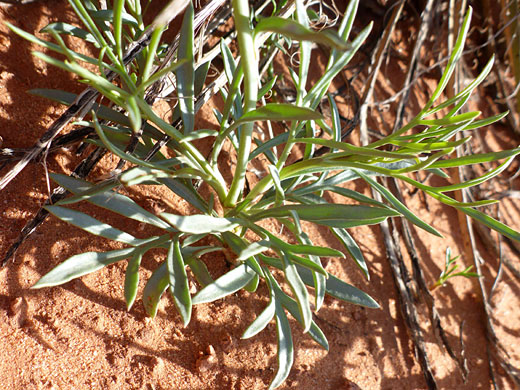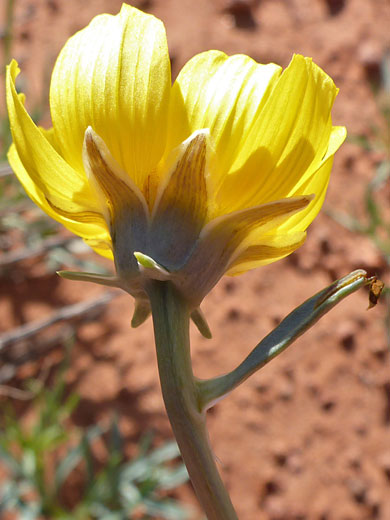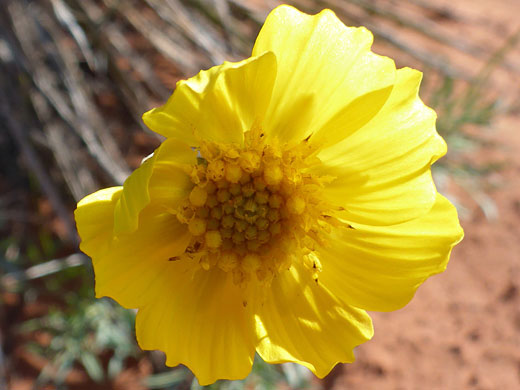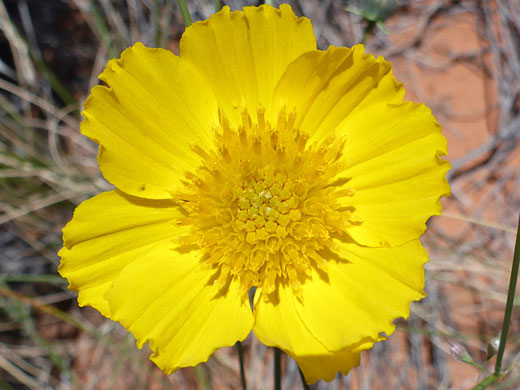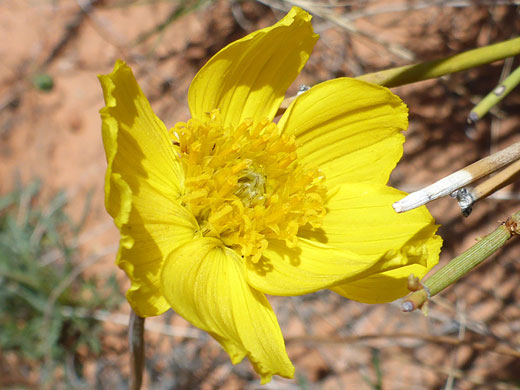
Cup-shaped yellow flowerhead; thelesperma subnudum, Bonelli Spring Route, Vermilion Cliffs National Monument, Arizona
Common name:
Navajo tea
Family:
Scientific name:
Thelesperma subnudum
Main flower color:
Range:
Southeast Nevada, the Four Corners states, west Wyoming and west Montana
Height:
Up to 12 inches
Habitat:
Talus slopes, woodland openings, from 3,000 to 9,500 feet
Leaves:
Basal and cauline; pinnately divided, most often into 3 or 5 narrow lobes, the longest 1.5 inches
Season:
April to September
Flowerheads of thelesperma subnudum are centered on up to 100 yellow, short-lobed disc florets, each containing a column of fused anthers and a style. These are usually surrounded by eight broad ray florets, up to 0.8 inches long, with slightly fringed margins. Sometimes the rays are absent. Below are eight lance-shaped phyllaries, lined by thin, whitish margins, while at their base are up to nine shorter, spreading bractlets, the calyculi.
Cauline leaves are concentrated on the lower third of the stem; they are pinnately lobed, divided into an odd number of linear to narrowly oblanceolate segments, pointed at the tip. All plant parts are hairless. Stems are erect and unbranched. Flowerheads are produced singly or in groups of up to three, at the top of the stem.
Cauline leaves are concentrated on the lower third of the stem; they are pinnately lobed, divided into an odd number of linear to narrowly oblanceolate segments, pointed at the tip. All plant parts are hairless. Stems are erect and unbranched. Flowerheads are produced singly or in groups of up to three, at the top of the stem.
All Contents © Copyright The American Southwest | Comments and Questions | Contribute | Site Map

